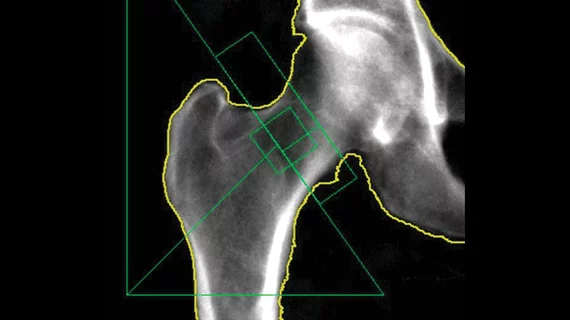Despite radiation exposure and fracture risk, pricey QCT bone density scans are rising in popularity
MedPage Today reported April 13 that quantitative computed tomography (QCT) bone density scans for osteoporosis screening are on the rise, in spite of their high costs and potentially questionable accuracy.
“Dual-energy X-ray absorptiometry (DXA) has long been the gold standard for osteoporosis screening. But now, thousands of patients may be inappropriately undergoing bone mineral density studies via quantitative computed tomography — which may be less accurate and more expensive, with far higher radiation exposure,” author Cheryl Clark writes.
In examining possible reasons behind the rise in QCT orders — of which nearly half come from just four states — the article notes that reimbursement rates for DXA were cut drastically in 2007 under the Deficit Reduction Act, and that some clinicians have decommissioned their DXA scanners since then.
QCT bone density scans can be performed on a CT scanner, while a DXA scanner is single-purpose.
Read the full story from MedPage Today.
Related DXA Content:
Men treated for prostate cancer have increased fracture risk, yet few complete DXA screening
Routine CT scans offer radiologists opportunity to detect costly bone problems
Bone density scans show promise for predicting atherosclerotic cardiovascular disease
Ultrasound assesses bone health similarly to DXA, study finds
Combining DXA, quantitative CT makes for most effective osteoporosis diagnosis
Exporting data from DXA exams directly to the EMR reduces errors, improves turnaround times
